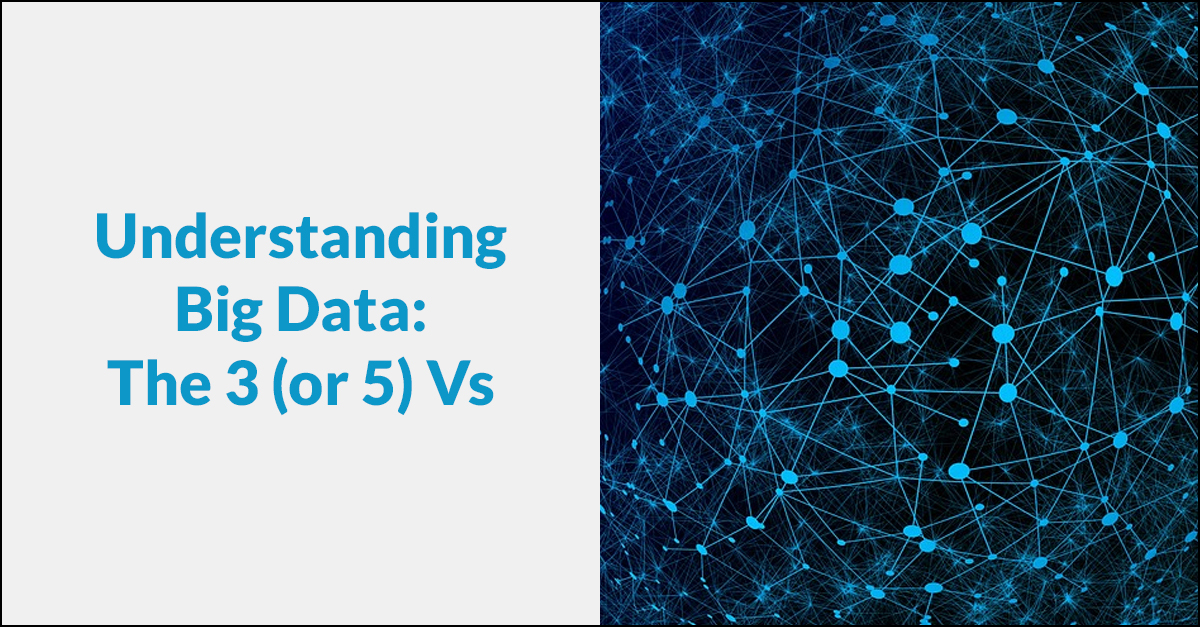
In the world of ever-increasing technology, data collection, and privacy concerns, your business is likely collecting exponentially more data than it was five, or even two, years ago.
You’ve also likely heard the term “big data.”
But is a business that’s collecting vast amounts of data automatically partaking in big data?
The short answer is no.
The long answer is that big data describes something much more involved than just collecting large amounts of data.
What is Big Data?
In 2016, big data was defined by a group of Italian researchers as, “the information assets characterized by such a high volume, velocity, and variety to require specific technology and analytical methods for its transformation into value.”
Data under the big data umbrella comes from a variety of sources: software systems, CRMs, ERPs, public data sources, Internet of Things (IoT) devices, smartphones, browsers, social media, and many more. The data collected from these sources holds valuable
information, insights, and trends that can lead to better (and faster) decision-making.
And data these days includes more than just numbers in a spreadsheet or database. With improved processing power, it now also encompasses photos, videos, audio, and information from IoT devices.
The value of big data comes from the idea that if you have enough information about something, then the right models and simulations can find patterns and predict outcomes. This relates closely to artificial intelligence (AI) and cognitive services. For example, by analyzing billions of photos, which are made up of data, systems can “learn” to
identify different elements within photos they’ve never been exposed to.
To paint a clearer picture, let’s look at the common characteristics of big data identified by the Italian researchers mentioned above.
The 3 (Well, 5) Vs of Big Data
When we talk about the 3 Vs, we’re referring to three characteristics that were originally used to define big data:
There are two more “V” traits that were added later to inform the usability (or lack of usability) of big data under the original three Vs:

Let’s walk through each V in more detail.
Volume
The amount of data is the most commonly thought-of characteristic of big data, which makes sense since it’s called big data.
At this point in history, data volume is growing exponentially. According to Forbes,
more data has been created in the past two years than in all of the rest of history. And Cisco estimates there will be more than 50 billion smart connected devices in the world by 2020, all developed to collect, analyze, and share data.
Velocity
When you have large amounts of data, it’s only considered big data if it’s collected, processed, and applied rapidly. Working with a lot of data means a lot of processing power is required to collect, store, analyze, and interpret it.
Big data systems process and apply data in real time, or as close to real time as possible. And speed is crucial to making the most of your data. In fact, when it comes to applying big data, velocity can be more important than volume. If you’re
stuck choosing between a low volume of data at a high speed vs. a high volume of data at low speeds, it’s more agile to use less data to make faster decisions.
Variety
Unlike traditional spreadsheets with limits on data types and formats, big data can and should come in a variety of formats from many different sources. Thanks to increases in computing power and more advanced algorithms, computers can process both structured
and unstructured data in multiple formats.
Veracity
To keep with the V theme, veracity is the term used to describe the quality of the data. Because big data uses massive amounts of data to find trends and make predictions, the quality and cleanliness of the data going in greatly affects the quality and
accuracy of the output insights.
Value
Having a lot of high-quality data in a variety of formats that’s processed quickly is great. But what’s most important with big data is the value it brings to businesses. Businesses collecting data they can’t (or won’t) use to
make better decisions are missing big opportunities.
Using Big Data
As mentioned in the final of the five Vs, big data is only valuable if businesses actually use it to gain new insights and make better decisions. Just collecting a ton of data for the fun of it doesn't mean anything. Big data only becomes relevant if
a business takes action on it.
If you’re ready to take action on your data, reach out.